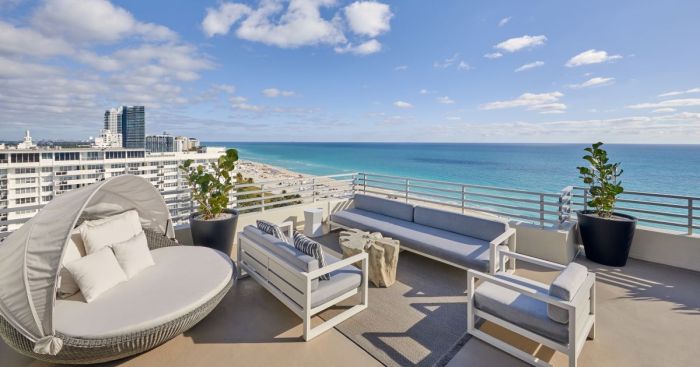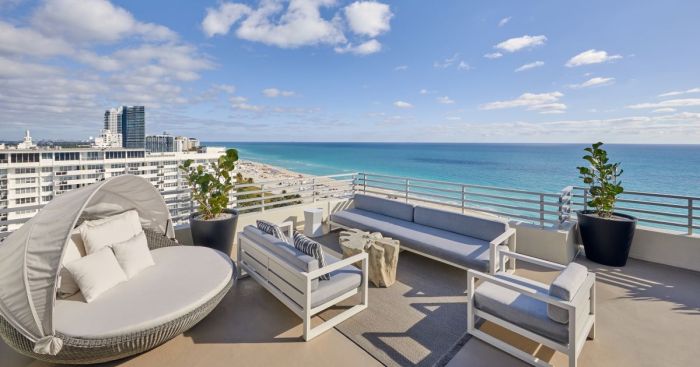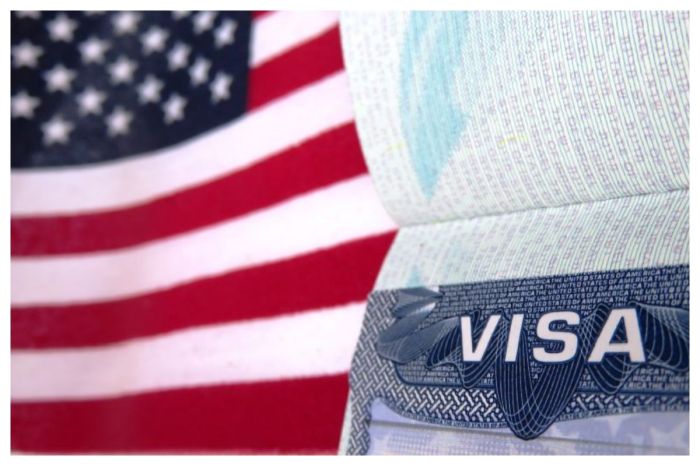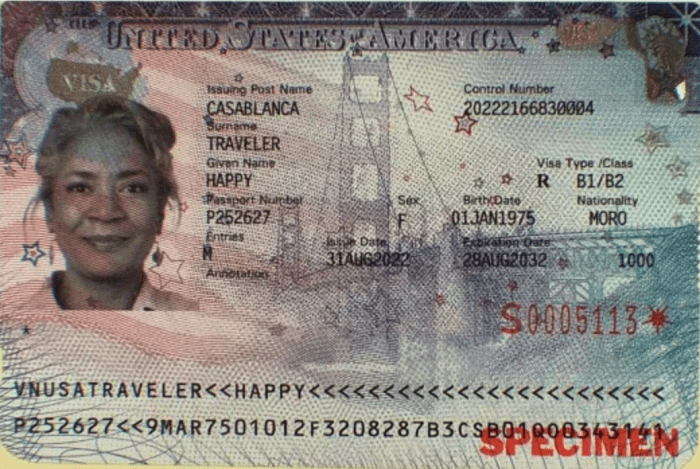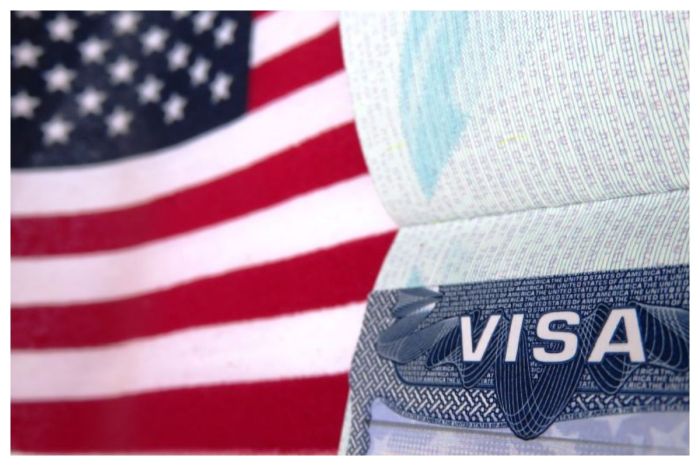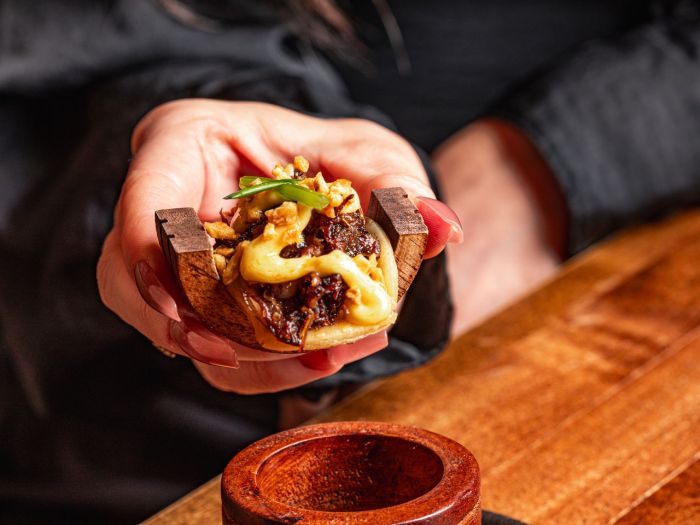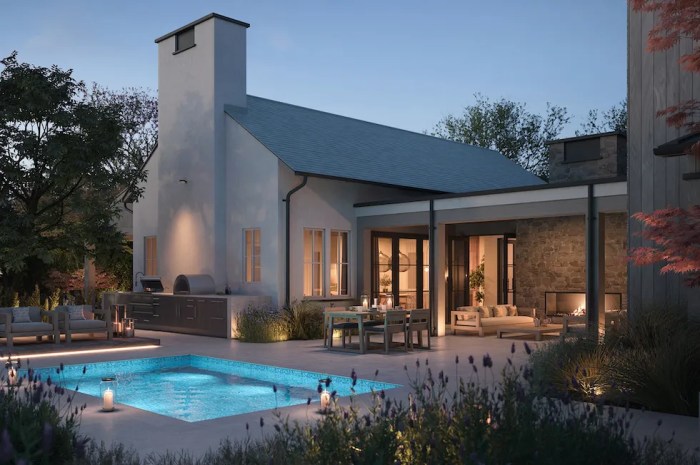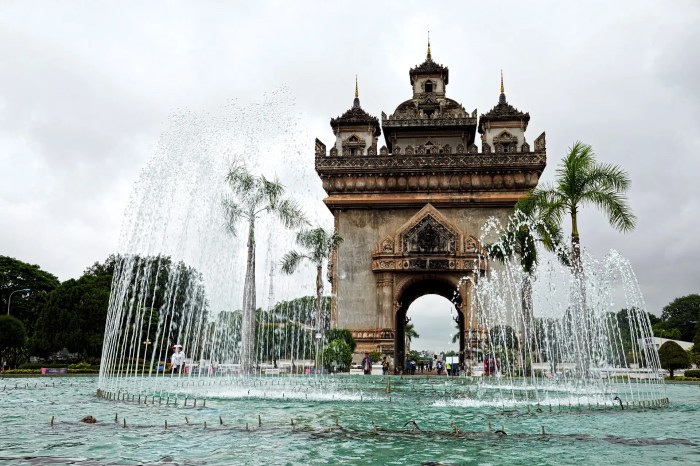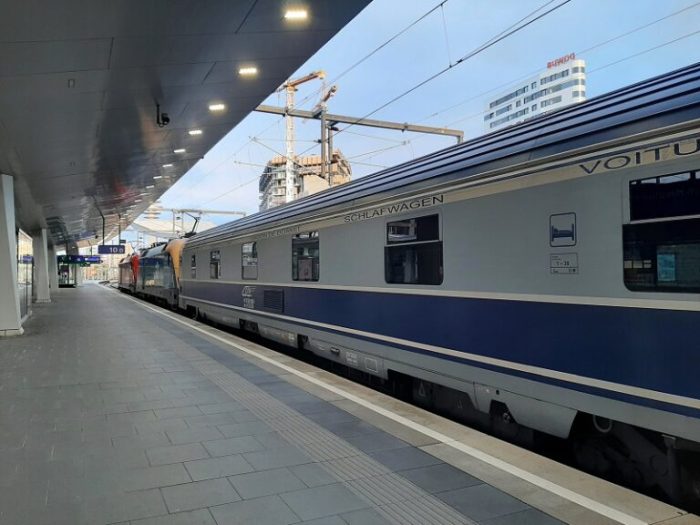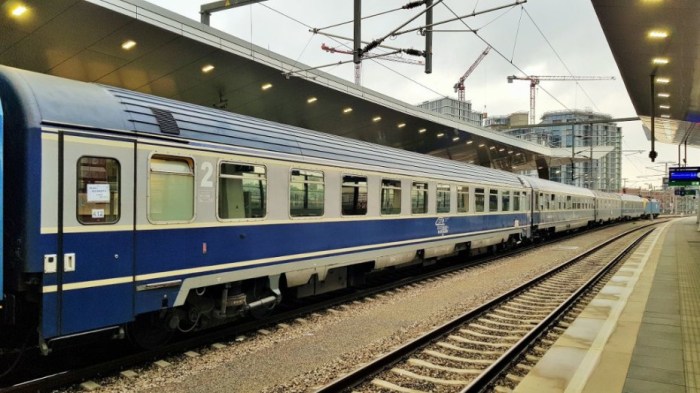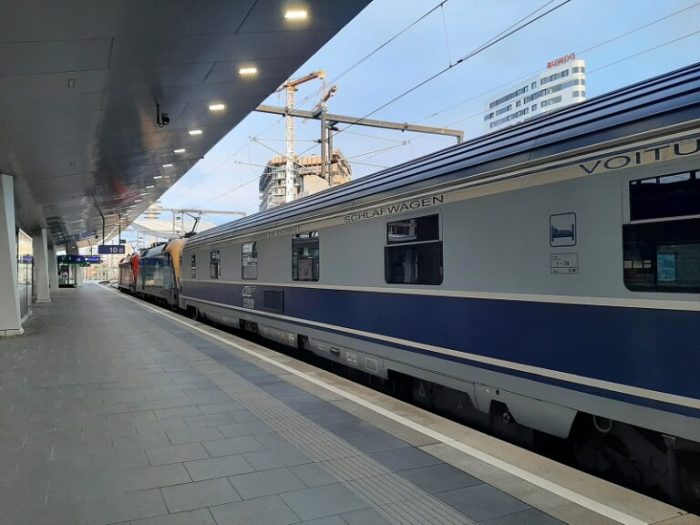US summer vacation destinations offer a diverse range of experiences, from bustling coastal cities to serene mountain retreats. This guide explores popular and lesser-known spots, considering factors like climate, activities, and attractions to help you plan your perfect summer getaway. We’ll delve into coastal escapes, mountain adventures, and national park explorations, highlighting what makes each region unique.
Discover the best beaches for surfing, swimming, and relaxation. Uncover hidden gems in national parks, perfect for families and nature lovers. Explore the best mountain resorts and hiking trails, and find out which destinations are perfect for romantic getaways or budget-conscious travelers. Let’s embark on a journey to uncover the ultimate US summer vacation destinations.
Introduction to Summer Vacation Destinations in the US
The United States boasts a diverse range of summer vacation destinations, catering to various interests and budgets. From bustling coastal cities to serene mountain retreats and awe-inspiring national parks, there’s a perfect spot for everyone seeking an unforgettable summer escape. This exploration delves into the diverse landscapes and attractions that make American summer vacations so appealing. This overview will highlight popular and less-known destinations, exploring the factors contributing to their appeal.The popularity of specific destinations often hinges on a combination of factors, including the region’s climate, the availability of outdoor activities, and the presence of notable attractions.
Warm weather, ideal for swimming, hiking, and outdoor sports, frequently draws crowds to coastal areas. Mountain resorts, conversely, offer cooler temperatures and opportunities for hiking, skiing (in some cases), and scenic views. National parks, with their natural beauty and historical significance, attract visitors seeking adventure, wildlife viewing, and immersion in nature.
Popular and Less-Known Summer Vacation Spots
The US offers a vast array of summer vacation destinations, spanning different regions. Well-known destinations, like the Outer Banks of North Carolina or the beaches of California, draw tourists seeking sun, sand, and surf. Less-known gems, like the Acadia National Park in Maine or the Apostle Islands in Wisconsin, provide a more intimate and tranquil experience.
Regional Variations in Summer Vacation Destinations
Various factors influence the appeal of summer vacation destinations. Climate plays a pivotal role, as warm temperatures in coastal areas are often attractive for swimming and sunbathing. Mountainous regions provide cooler temperatures and opportunities for hiking and exploring scenic trails. National parks, with their diverse ecosystems and historical landmarks, offer a unique combination of natural beauty and cultural experiences.
The table below highlights these distinctions across three prominent US regions.
Summer in the US is all about outdoor adventures, and for those seeking something truly unique, I’d recommend checking out some incredible hiking trails. One particularly stunning option is the Hiking Michinoku Coastal Trail in Japan, offering breathtaking views and a challenging but rewarding experience. hiking Michinoku coastal trail japan While you’re planning your US summer vacation destinations, remember that incredible experiences can be found both near and far! So get those ideas flowing, and explore all the amazing places the US has to offer!
| Region | Climate | Activities | Attractions |
|---|---|---|---|
| Coastal | Generally warm and sunny, with potential for humidity in some areas. Sea breezes often moderate temperatures. | Swimming, sunbathing, surfing, boating, fishing, water sports, exploring coastal towns and villages. | Beaches, lighthouses, historic seaports, coastal parks, marine wildlife viewing (depending on location). |
| Mountain | Cooler temperatures, often with distinct seasons. Higher elevations experience cooler weather even in summer. Potential for rain or snow, especially at higher altitudes. | Hiking, camping, rock climbing, fishing, exploring mountain towns, scenic drives, wildlife viewing. | Mountain peaks, national forests, lakes, waterfalls, scenic vistas, hiking trails, historical sites. |
| National Parks | Varied, depending on the specific park’s location and elevation. Ranges from hot and dry to cool and mountainous. | Hiking, camping, wildlife viewing, photography, historical site exploration, educational programs, nature walks. | Diverse landscapes, canyons, forests, rivers, historical sites, unique geological formations, wildlife sanctuaries. |
Coastal Destinations
Coastal destinations in the US offer a diverse range of experiences, from sun-drenched beaches to vibrant seaside towns. These locations attract visitors seeking relaxation, adventure, and culinary delights. The varied landscapes and activities cater to diverse interests, making coastal vacations a popular choice for families, couples, and solo travelers alike.Coastal areas in the US are renowned for their natural beauty and rich history.
The unique characteristics of each location, from the sandy shores of Florida to the rugged cliffs of Maine, contribute to the charm and appeal of these vacation spots.
Popular Coastal Vacation Spots
The US boasts a plethora of popular coastal destinations, each with its own distinct appeal. Well-known choices include the sandy shores of Florida, the vibrant energy of California’s coast, and the charming towns of the Outer Banks. These locations attract tourists year-round with their variety of attractions.
Unique Characteristics, Us summer vacation destinations
Each coastal location offers a unique blend of natural beauty and human-made attractions. Florida’s beaches are renowned for their white sand and calm waters, perfect for families. California’s coast features dramatic cliffs, surfing waves, and vibrant cityscapes. The Outer Banks offer a blend of historical sites and stunning beaches. These diverse characteristics appeal to different preferences and create a memorable experience for each visitor.
Planning US summer vacation destinations can be tricky, but exploring the stunning natural beauty of the country is a great option. For instance, if you’re seeking breathtaking forests, checking out trip ideas nature travel most beautiful forests in the will give you tons of inspiration. From towering pines to hidden glades, these locations offer incredible photo opportunities and peaceful escapes.
Ultimately, no matter your preferred US summer vacation destination, immersing yourself in nature is a fantastic choice.
Types of Accommodations
A wide array of accommodations caters to every budget and preference. From luxurious hotels to cozy vacation rentals, and campsites for those seeking a more rustic experience, travelers can choose from diverse options. This variety ensures that every visitor finds an accommodation that fits their needs and desires.
Family Activities
Families will find a range of activities to enjoy. Beach walks, building sandcastles, swimming, and watersports are common favorites. Many coastal towns also have family-friendly parks, playgrounds, and amusement areas, adding to the overall enjoyment of the trip.
Planning US summer vacation destinations? With the upcoming high-speed train connection between Paris and Berlin, Europe is looking more accessible than ever. This opens up some amazing possibilities for exploring Europe and the US. Perhaps a summer trip to the US combining with European adventures could be in the cards! Lots of options for American summer vacations await!
- Beach walks and picnics are a quintessential family activity, offering opportunities for bonding and relaxation.
- Many coastal areas provide opportunities for water sports like kayaking, paddleboarding, and boat tours, suitable for families with varying interests.
- Local parks and playgrounds often feature engaging activities, providing an enjoyable and active experience for children.
Couple Activities
Couples seeking a romantic getaway can find plenty of opportunities to create lasting memories. Scenic walks along the shore, romantic dinners at seaside restaurants, and couples’ massages offer relaxation and intimacy. The tranquil atmosphere of many coastal areas provides an ideal setting for bonding and enjoying quality time together.
- Couples often enjoy exploring charming coastal towns, visiting local art galleries, and indulging in romantic dinners with a view.
- Relaxing on the beach, enjoying sunset strolls, and indulging in couples’ massages can enhance intimacy and create lasting memories.
- Many coastal areas offer a wide variety of romantic restaurants and cafes, providing opportunities for intimate meals and conversations.
Solo Traveler Activities
Solo travelers can also find fulfilling experiences. Beach walks, reading a book under a shady tree, and exploring local shops provide opportunities for introspection and self-discovery. Many coastal towns offer unique experiences like art galleries, museums, and historical sites, catering to diverse interests.
- Solo travelers can enjoy the peace and quiet of a beach walk, the solitude of a scenic overlook, or the unique atmosphere of a local shop.
- Exploring art galleries, museums, or historical sites offers an opportunity for personal growth and learning.
- Solo travelers can also participate in local events and meet like-minded individuals, enriching their experience.
Beach Comparison
| Beach | Best for | Description |
|---|---|---|
| Myrtle Beach, South Carolina | Swimming and Families | Known for its wide, sandy beaches and family-friendly atmosphere. Offers a range of water sports and attractions. |
| Ocean Beach, San Diego, California | Surfing and Outdoor Activities | Famous for its iconic waves, perfect for surfers and outdoor enthusiasts. Offers a blend of urban and beach life. |
| Cape Cod, Massachusetts | Relaxation and Scenic Beauty | Characterized by its scenic beauty, charming towns, and opportunities for leisurely walks and relaxation. Offers a quieter, more serene experience. |
Mountain Destinations
Mountain destinations offer a unique escape from the hustle and bustle of everyday life, immersing visitors in breathtaking scenery and thrilling outdoor activities. From towering peaks to dense forests, these regions provide a canvas for hiking, skiing, and exploring the natural world. The crisp mountain air, stunning vistas, and sense of adventure make mountain vacations incredibly rewarding.Mountain resorts and national parks often provide lodging, dining, and guided activities.
These destinations cater to a wide range of interests, from families seeking peaceful walks to thrill-seekers seeking challenging climbs. The variety of experiences makes mountain destinations a popular choice for summer vacations.
Popular Mountain Vacation Destinations
These destinations are renowned for their stunning natural beauty and abundance of outdoor activities. Examples include the Rocky Mountains, the Appalachian Mountains, and the Sierra Nevada range, each offering a distinctive character and charm. Within these ranges lie iconic national parks and renowned mountain towns, perfect for a summer getaway.
Unique Experiences at Mountain Resorts and National Parks
Mountain resorts often offer a blend of luxury and adventure. They provide amenities like lodging, dining, and access to a variety of activities, including zip-lining, horseback riding, and scenic chairlifts. National parks, on the other hand, emphasize preservation and offer opportunities for backpacking, wildlife viewing, and exploring pristine wilderness. This combination of activities and experiences caters to different tastes and preferences.
Hiking Trails and Scenic Drives
Numerous hiking trails cater to various experience levels, from leisurely strolls to strenuous climbs. These trails offer breathtaking vistas and opportunities to connect with nature. Similarly, scenic drives through mountain passes and valleys provide stunning views and access to hidden gems.
- Easy Hiking Trails: The Appalachian Trail offers many sections with moderate difficulty and spectacular views. These trails are perfect for families and those seeking a less strenuous experience, while still enjoying the natural beauty of the mountains.
- Moderate Hiking Trails: Many national parks boast trails with moderate difficulty, allowing for exploration of diverse ecosystems and impressive vistas. These trails are well-suited for experienced hikers who enjoy a moderate challenge.
- Challenging Hiking Trails: For experienced hikers, some trails in the Rocky Mountains, for example, offer an intense and rewarding challenge. These trails demand more physical fitness and technical expertise. These climbs often offer panoramic views from the summits.
- Scenic Drives: The scenic drives along mountain passes, such as the Pikes Peak Highway in Colorado, provide breathtaking vistas and opportunities for photo stops. These drives offer a unique perspective of the mountain landscape and surrounding ecosystems.
Outdoor Gear and Safety Precautions
Appropriate gear is essential for a safe and enjoyable mountain experience. Proper clothing, footwear, and navigation tools are critical for navigating the unpredictable mountain environment. Safety precautions, such as checking weather forecasts, informing someone of your plans, and carrying emergency supplies, are paramount.
“Always prioritize safety when embarking on mountain adventures.”
Advantages for Different Age Groups and Interests
Mountain destinations offer something for everyone. Families can enjoy picnics, nature walks, and engaging with the natural environment. Adventurous individuals can participate in challenging hikes, rock climbing, or other outdoor activities. Experienced hikers can find rewarding challenges in traversing remote areas and enjoying the solitude of nature.
- Families: Mountain destinations provide opportunities for family bonding through activities like camping, nature walks, and picnics. The scenic beauty and fresh air contribute to a memorable family experience.
- Adventure Seekers: Mountain environments offer challenging activities such as rock climbing, white-water rafting, and mountain biking. The thrill and adrenaline rush are appealing to those seeking a more active and adventurous experience.
- Relaxation Seekers: Mountain resorts often provide opportunities for relaxation and rejuvenation. The quiet atmosphere and beautiful surroundings allow visitors to unwind and reconnect with nature.
National Parks and Other Destinations
Summer in the US offers unparalleled opportunities to explore the nation’s natural wonders. National parks, with their diverse landscapes and abundant activities, beckon visitors seeking outdoor adventures. From towering mountains to pristine lakes and vibrant forests, these parks provide a unique escape from everyday life. This section delves into the attractions and highlights some lesser-known gems, along with crucial planning advice for a memorable trip.Beyond the iconic parks, the US boasts a wealth of smaller, often less crowded, destinations that still offer exceptional experiences.
These hidden gems provide a chance to connect with nature in a more intimate way, free from the crowds that often overwhelm the more popular attractions. Careful planning, including advance reservations for accommodations, is key to a smooth and enjoyable trip to these destinations.
Appealing Aspects of National Parks in Summer
National parks thrive during summer. The pleasant weather and longer daylight hours encourage outdoor activities, and the abundance of wildlife often becomes more visible. The lush greenery and blooming flowers create a vibrant and picturesque backdrop for exploration. The availability of various outdoor activities, from hiking and camping to wildlife viewing and scenic drives, makes national parks an ideal summer destination.
Attractions and Activities in National Parks
National parks offer a wide array of activities. Hiking trails cater to all skill levels, from gentle strolls to challenging climbs. Camping provides an immersive experience, allowing visitors to connect with nature in a truly authentic way. Wildlife viewing opportunities abound, and many parks offer guided tours, providing insights into the local ecosystem and species. Boating, fishing, and picnicking are popular choices for relaxation and enjoyment.
Many parks also have visitor centers offering exhibits, maps, and information on the park’s history and ecology.
Lesser-Known National Parks and Their Unique Features
Beyond the well-known parks like Yosemite and Yellowstone, several lesser-known gems offer unique experiences. For instance, the Great Basin National Park in Nevada features a stark, desert landscape, offering stunning views of the surrounding mountains and a glimpse into a unique ecosystem. Hot Springs National Park in Arkansas boasts a variety of thermal springs, perfect for relaxation and soaking in the therapeutic waters.
These parks, while not as crowded as their more famous counterparts, provide equally awe-inspiring and memorable experiences. They often feature more secluded trails, less crowded campsites, and a more intimate connection with nature.
Importance of Planning and Booking Accommodations
Advance planning is crucial for a smooth summer vacation. Accommodations, especially in popular parks, book up quickly, especially during peak season. Camping reservations should be made well in advance to secure a spot, as availability is often limited. This allows you to have a guaranteed place to stay, and to plan your itinerary accordingly. Many parks offer various lodging options, including cabins, lodges, and hotels, in addition to campsites.
Unique and Interesting Less-Crowded Destinations
- Acadia National Park (Maine): This park offers stunning coastal scenery, including rocky cliffs, sandy beaches, and picturesque harbors. Hiking trails provide opportunities to admire the breathtaking coastal views. The park offers opportunities for hiking, biking, and exploring charming coastal towns.
- Shenandoah National Park (Virginia): Known for its scenic Skyline Drive, this park offers breathtaking views of the Appalachian Mountains. Hikers can explore various trails, and the drive itself is a treat for nature enthusiasts. The park provides diverse hiking trails and scenic overlooks.
- Isle Royale National Park (Michigan): This island park in Lake Superior offers a wilderness experience focused on wildlife viewing, particularly wolves and moose. The remote location and limited access contribute to a less-crowded environment. Visitors can enjoy hiking, kayaking, and exploring the island’s unique ecosystem.
Budget-Friendly Options: Us Summer Vacation Destinations
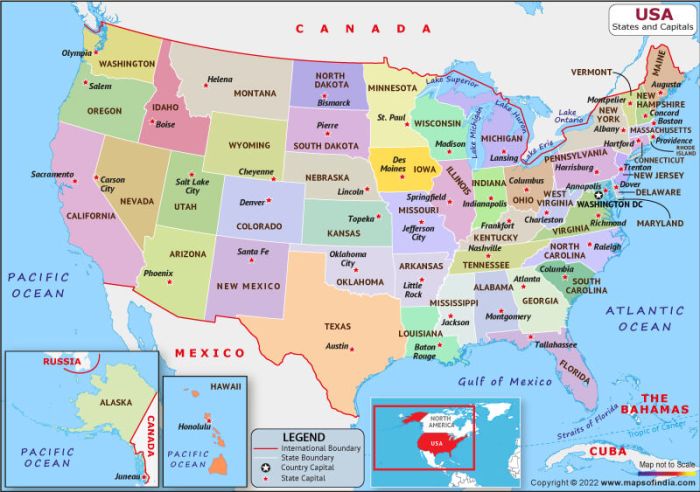
Summer vacations don’t have to break the bank! There are plenty of affordable ways to explore the beauty of the US. From camping under the stars to finding budget-friendly hotels, this section highlights ways to enjoy a memorable summer getaway without emptying your wallet. Savvy planning and smart choices can make your dream vacation a reality.Discovering budget-friendly destinations and activities is key to maximizing your summer vacation experience.
This involves careful consideration of accommodation costs, transportation expenses, and entertainment options, and balancing these factors with your desired level of comfort and enjoyment.
Camping
Camping offers a unique way to connect with nature while significantly reducing accommodation costs. Campgrounds often provide a wide range of amenities, from basic sites to fully equipped cabins. Choosing the right campground is crucial for a comfortable experience. Campgrounds vary widely in price depending on location, amenities, and proximity to popular attractions. Sites with access to amenities like restrooms, showers, and picnic areas may command higher fees.
Boondocking, or dispersed camping, is a great option for those seeking a more remote experience, but it typically requires more self-sufficiency and research into local regulations.
Budget-Friendly Hotels
Finding budget-friendly hotels requires a proactive approach. Websites specializing in discounted hotel rates and last-minute deals are invaluable tools. Utilizing online booking platforms allows comparison of various options, facilitating smart choices based on price and location. Consider hotels in less-popular areas or outside major tourist hubs, where rates are often lower without sacrificing the quality of the experience.
Staying in smaller, locally-owned hotels or motels can also be an excellent option for experiencing the local culture and supporting small businesses.
Alternative Accommodations
Exploring alternative accommodations like vacation rentals, hostels, or bed and breakfasts can significantly reduce lodging costs. Vacation rentals, especially cabins or houses, often offer more space and amenities than traditional hotel rooms, while remaining affordable. Hostels, popular among budget travelers, offer social opportunities and a chance to meet people from around the world. They provide basic lodging with shared facilities.
Look for offers and packages that combine accommodation with activities or attractions.
Activities and Transportation
The cost of activities varies significantly depending on the region and the type of experience. National parks often offer free or low-cost entry, and hiking or biking trails are great ways to enjoy the outdoors without spending much. Public transportation can be a cost-effective way to get around, especially in urban areas. Look for free events, festivals, or local attractions in your destination to save money on entertainment.
If you’re renting a car, consider fuel costs and parking fees in your budget.
Comparing Costs Across Regions
The cost of accommodation and activities varies significantly across different regions of the US. For instance, coastal areas typically have higher accommodation costs compared to rural areas. The cost of activities can vary greatly, from free park visits in national parks to expensive theme park tickets. Researching average costs in different regions before planning your trip can help you create a realistic budget.
Consider the local cost of food and beverages, and factor in these costs when estimating your expenses.
| Region | Accommodation (avg.) | Activities (avg.) |
|---|---|---|
| Coastal California | $150-$300/night | $50-$100/day |
| National Parks (interior) | $75-$150/night | $25-$50/day |
| Appalachian Mountains | $50-$150/night | $25-$75/day |
Family-Friendly Destinations

Planning a family vacation can be a whirlwind of excitement and logistics. Choosing a destination that caters to the needs of everyone, from toddlers to teenagers, is key to a memorable trip. From vibrant cityscapes to tranquil natural wonders, the US offers a diverse range of family-friendly destinations, each with unique attractions and activities. Understanding the specific interests and ages of family members is crucial for making the right choice.Family vacations should be enjoyable for everyone, fostering lasting memories and creating precious family time.
This involves considering various factors, such as the accessibility of attractions, the availability of kid-friendly amenities, and the overall atmosphere of the destination. A well-planned family vacation can be an enriching experience for all ages.
Orlando, Florida
Orlando, Florida, is a popular choice for families with children of all ages. Its abundance of theme parks, including Disney World, Universal Studios, and SeaWorld, provides endless entertainment options. These parks offer rides and attractions suitable for various age groups, ensuring excitement for everyone. Additionally, Orlando boasts a wide range of hotels and resorts catering to families, providing comfortable accommodations and amenities.
San Diego, California
San Diego offers a blend of attractions for families, appealing to different interests. The city boasts beautiful beaches, perfect for swimming, sunbathing, and building sandcastles. SeaWorld San Diego and the San Diego Zoo are popular destinations, providing engaging experiences with marine life and diverse animal species. The city also offers numerous parks and playgrounds, making it a fantastic choice for active families.
Yellowstone National Park
Yellowstone National Park, renowned for its stunning natural beauty, offers a unique family experience. While the park may not be ideal for very young children due to the terrain and potential for wildlife encounters, older children and teenagers will find the diverse landscape and wildlife viewing opportunities captivating. Hiking trails, wildlife viewing tours, and ranger-led programs provide educational and engaging experiences.
The park’s vast wilderness and unique geothermal features offer opportunities for outdoor adventure and learning.
Considerations for Families with Young Children
| Destination | Accessibility | Amenities | Activities |
|---|---|---|---|
| Orlando | Excellent; theme parks offer stroller rentals and child-care services. | Many hotels offer kids’ clubs, pools, and play areas. | Theme parks, water parks, and other attractions are specifically designed for families. |
| San Diego | Good; beaches and parks are easily accessible. | Hotels and resorts offer family suites and cribs. | Beaches, zoos, and museums are engaging for young children. |
| Yellowstone | Moderate; some trails and areas might be challenging for young children. | Lodging options vary in amenities. | Wildlife viewing, hiking, and ranger programs can be educational but require more physical exertion. |
The table above provides a comparative overview of these destinations based on their suitability for families with young children. It highlights factors like accessibility, amenities, and activities, aiding in the decision-making process. Consider the specific needs and interests of your family when choosing a destination.
Romantic Getaways
Escape the everyday and rediscover the magic of connection with a romantic getaway. The US offers a plethora of destinations tailored for couples seeking intimacy, adventure, and unforgettable experiences. From the breathtaking landscapes of the mountains to the serene shores of the coast, there are countless opportunities to create lasting memories.Romantic getaways are more than just a vacation; they are a chance to reconnect, reignite passions, and celebrate the unique bond shared between partners.
Choosing the right destination, activities, and accommodations is key to ensuring a truly special experience. The ambiance should be conducive to intimacy and relaxation, while the activities should spark shared joy and create lasting memories.
Romantic Destinations in the US
The US boasts a diverse array of romantic destinations, catering to various tastes and preferences. From the bustling energy of New Orleans to the tranquil beauty of the Pacific Northwest, there’s a place for every couple. Consider the following popular choices:
- The Outer Banks, North Carolina: Known for its breathtaking beaches, charming towns, and romantic sunsets, the Outer Banks offers a perfect blend of relaxation and exploration. Couples can enjoy leisurely walks along the shoreline, indulge in fresh seafood, and explore historic lighthouses. The Outer Banks’ laid-back atmosphere and stunning natural beauty create a truly unforgettable experience.
- Charleston, South Carolina: Immerse yourselves in the rich history and vibrant culture of Charleston. Stroll through historic streets lined with antebellum architecture, savor delectable Southern cuisine, and enjoy romantic carriage rides. The city’s charm and elegance provide an idyllic backdrop for couples seeking a sophisticated and memorable getaway.
- Sedona, Arizona: Experience the awe-inspiring beauty of Sedona’s red rock formations and breathtaking landscapes. Enjoy hiking amidst stunning vistas, taking in the mesmerizing sunset views, or indulging in couples’ massages at luxurious resorts. The serene atmosphere and unique scenery offer a truly unforgettable romantic experience.
Activities for Couples
Creating shared experiences is vital for strengthening bonds and fostering lasting memories. Activities tailored for couples can range from adventurous explorations to intimate moments of quiet contemplation.
- Wine Tasting and Culinary Experiences: Many destinations offer exceptional wine tasting opportunities, where couples can savor fine wines while enjoying the scenic surroundings. Culinary experiences, such as cooking classes or fine dining, can create an intimate and delicious way to connect.
- Outdoor Adventures: From hiking and kayaking to horseback riding and scenic drives, outdoor adventures can provide couples with a shared sense of accomplishment and create lasting memories. The thrill of exploration and the beauty of nature provide an ideal backdrop for bonding.
- Relaxing Spa Treatments: Indulge in couples’ massages, aromatherapy treatments, and other rejuvenating spa experiences to promote relaxation and intimacy. This is a fantastic way to unwind, reconnect, and create a sense of shared well-being.
Romantic Accommodations
Choosing the right accommodation is crucial for setting the mood for a romantic getaway. Consider the ambiance and amenities that cater to couples’ needs and desires.
- Luxury Resorts: These resorts often offer exclusive amenities, such as private balconies with stunning views, personalized butler service, and exquisite dining experiences. They provide a luxurious and unforgettable atmosphere.
- Boutique Hotels: Boutique hotels typically feature unique design elements and personalized service, creating a cozy and intimate atmosphere. They often offer specialized packages designed for couples.
- Cozy Cabins: In secluded mountain areas or near lakes, cozy cabins offer a romantic and secluded retreat. These provide a chance for couples to unwind and connect with nature.
Activities and Attractions
Summer vacations offer a plethora of exciting activities and attractions, catering to diverse interests and preferences. From thrilling adventures to relaxing escapes, the possibilities are endless. Planning your itinerary around these experiences can significantly enhance your overall travel experience and create lasting memories.Exploring these destinations involves more than just sightseeing; it’s about engaging with the local culture, participating in unique activities, and creating meaningful connections with the environment.
The following sections detail popular attractions and activities across various US summer vacation destinations.
Coastal Destinations: Sun, Sand, and Surf
Coastal destinations in the US offer a range of activities, from sunbathing and swimming to thrilling water sports and exploring maritime history. These destinations often host vibrant summer festivals and events, adding to the overall charm.
- Water Activities: Popular water sports include surfing, paddleboarding, kayaking, and boating. Coastal towns often have rentals for these activities, making them accessible to visitors of all skill levels. For example, the Outer Banks in North Carolina are renowned for their surfing and beach activities. The abundance of sunshine and gentle waves makes these activities very appealing.
- Coastal Towns and Cities: Many coastal towns and cities have historical significance, offering opportunities to explore museums, lighthouses, and maritime museums. These destinations often have quaint shops, art galleries, and local markets that provide an opportunity for cultural immersion. The charming historic districts of Charleston, South Carolina, offer a glimpse into the region’s past.
- Summer Festivals: Coastal destinations often host summer festivals celebrating local culture, food, and music. These events create vibrant atmospheres and provide opportunities to connect with the local community. The annual St. Augustine Pirate & Treasure Festival in Florida is a prime example.
Mountain Destinations: Hiking, Views, and Outdoor Adventures
Mountain destinations offer a chance to immerse oneself in nature, engaging in hiking, fishing, and enjoying breathtaking scenery. Summer is an ideal time to explore these destinations, as the weather is pleasant and the trails are accessible.
- Hiking and Trekking: Mountainous regions boast numerous hiking trails, ranging from easy strolls to challenging climbs. National parks like the Smoky Mountains provide extensive hiking opportunities, suitable for various skill levels. The breathtaking views from the trails are a highlight of the experience.
- Fishing and Wildlife Viewing: Many mountain regions offer opportunities for fishing in lakes and rivers. Wildlife viewing is another popular activity, with chances to spot various bird species and other animals. The Shenandoah National Park in Virginia offers abundant opportunities for both.
- Summer Festivals: Mountain towns often host summer music festivals, craft fairs, and farmers’ markets, adding to the destination’s charm and providing a taste of local culture. Many festivals feature local artisans and produce.
National Parks: Preserving Nature’s Beauty
National parks are havens for outdoor enthusiasts, offering a wide range of activities, from hiking and camping to wildlife viewing and exploring historical sites. These destinations often feature unique ecosystems and diverse flora and fauna.
- Hiking and Camping: National parks provide vast opportunities for hiking and camping, offering stunning views and opportunities to connect with nature. Yosemite National Park in California is famous for its iconic granite cliffs and towering sequoia trees.
- Wildlife Viewing and Photography: National parks are ideal for wildlife viewing and photography, providing opportunities to observe various animal species in their natural habitats. The Grand Canyon National Park offers unique opportunities for this type of experience.
- Historical Sites and Museums: Many national parks also feature historical sites and museums that provide insights into the region’s past. The historical significance of these sites adds to the experience.
Other Destinations: Beyond the Usual
This category encompasses a variety of destinations, including historical cities, theme parks, and cultural centers. These locations provide unique experiences that appeal to diverse interests.
- Theme Parks: Theme parks offer thrilling rides and attractions, catering to families and thrill-seekers. Walt Disney World in Florida is a popular choice for family vacations.
- Cultural Centers and Museums: Many cities offer cultural centers and museums that provide insights into local history, art, and culture. The Smithsonian Institution in Washington, D.C., offers a wealth of knowledge across various disciplines.
- Local Festivals: Cities and towns often host local festivals that celebrate specific cultures, traditions, or events. These festivals provide a chance to immerse yourself in local customs and traditions.
Ultimate Conclusion
From sun-drenched beaches to towering mountain peaks, the US offers a summer vacation experience for every taste. We’ve explored various destinations, considering diverse interests and budgets. Whether you’re seeking a relaxing beach getaway, an adventurous hike, or a family-friendly adventure, this guide has something for you. Plan your perfect summer escape and make unforgettable memories!

